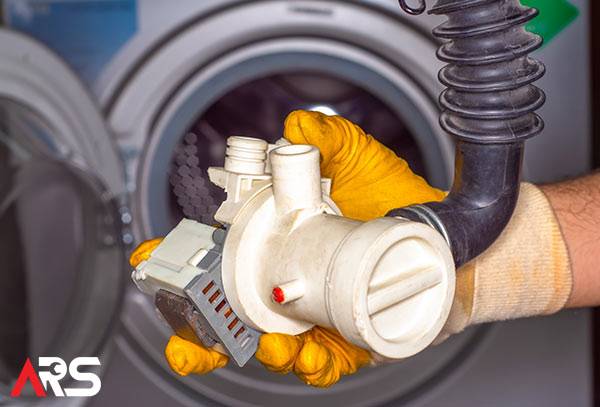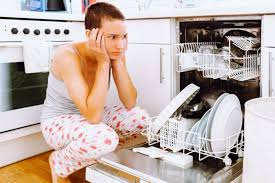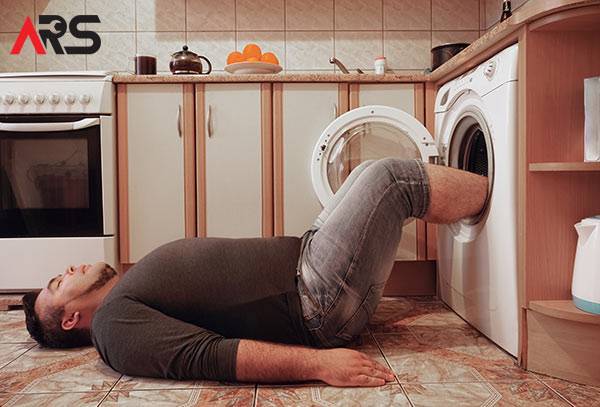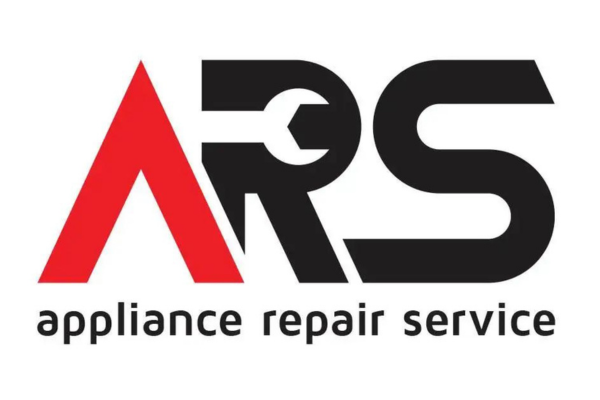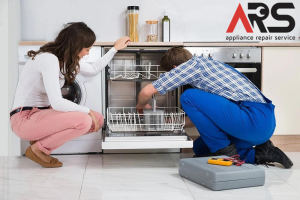 Water left in the tub usually points to a clog, install issue, or a failing drain component.
Water left in the tub usually points to a clog, install issue, or a failing drain component.
If you see standing water in the bottom of the dishwasher, do not panic. Most “dishwasher won’t drain” issues come down to a blocked filter, a kinked or clogged drain hose, a disposal knockout still in place after installation, a stuck check valve, or a failing drain pump. Work through the quick checks below before booking service.
Quick checks to try first (2 to 5 minutes)
- Run the disposal for 30 seconds. If your dishwasher drains through a garbage disposal, a food plug in the disposal or a knockout plug left in place after a new install will block flow.
- Clean the dishwasher filter. Remove the lower rack, twist out the filter, and rinse debris. A clogged filter is the most common reason for dishwasher not draining.
- Check the drain hose. Make sure it is not kinked or crushed behind the machine and that it forms a high loop up under the counter or connects to an air gap.
- Look in the sump. Remove large food scraps, labels, glass, or bones that can block the drain inlet.
- Try a reset. Power the unit off for 2 to 3 minutes and restart. On some models, holding Start for 3 to 5 seconds forces a drain.
Symptoms, likely causes, and fast fixes
| Symptom | Likely cause | What to do |
|---|---|---|
| Water pooled after cycle | Clogged filter or sump screen | Remove and rinse filter, clear debris at sump inlet. |
| New dishwasher not draining | Disposal knockout still installed | Remove the plug in the disposal’s DW inlet; reconnect hose. |
| Water returns to tub after drain | No high loop or failed check valve | Install a high loop or air gap, inspect one-way check valve for debris. |
| Buzzing pump but no water out | Drain pump jammed with glass/seed | Power off, access pump, remove obstruction; replace pump if damaged. |
| Loud humming, then cancel | Kinked or clogged drain hose / blocked sink standpipe | Straighten hose, flush hose, clear air gap, check sink drain. |
| Error code for not draining | Model-specific drain fault | Bosch E24, Whirlpool/KitchenAid F9E1, GE 888/blocked, follow model guide. |
Step-by-step: how to fix a dishwasher that is not draining
Safety first: Turn off power at the plug or breaker. If you need to pull the unit out, shut off the water supply valve.
- Clean the filter and sump. Remove lower rack, lift out both the coarse screen and fine filter. Rinse thoroughly. With a flashlight, check the sump inlet and remove debris.
- Clear the air gap or high loop. If you have an air gap on the sink, twist off the cap and clean inside. If you have a high loop only, ensure the hose loops to the underside of the counter before dropping to the disposal or drain.
- Flush the drain hose. Detach from the disposal or sink tailpiece, place end in a bucket, and run a short drain to check flow. If weak, remove hose and flush from both ends with hot water.
- Check the garbage disposal port. Remove any knockout plug if the dishwasher connection is new. Verify the port is open and clear.
- Inspect the drain pump. Access from below or behind the toe-kick. Look for obstructions in the impeller. If the pump is seized, noisy, or leaking, replacement is recommended.
- Verify the check valve. Many units have a rubber flapper near the pump outlet. Make sure it moves freely and is not warped closed.
Advanced notes and brand specifics
- Bosch not draining (E24/E25): Clean filter and sump, ensure the check valve behind the pump outlet is free, confirm high loop or air gap, and inspect for a partially blocked hose.
- Whirlpool / KitchenAid / Maytag: F9 E1 or “drn” points to slow drain. Clear hose and disposal port, then check the pump and check valve assembly.
- GE: Older models use a drain solenoid that can stick. Newer models rely on the pump and control timing; check for clogs first.
- Samsung / LG: Clean the coarse and fine filters, verify hose routing with a proper high loop, and confirm the sink drain is clear.
Prevention tips
- Scrape heavy food and labels. No need to prewash, but avoid bones, fruit pits, and paper.
- Clean the filter monthly. More often for large households.
- Use the right detergent and dose. Oversuds can slow draining.
- Always maintain a high loop or an air gap to stop backflow.
- Run hot water at the sink for 10 to 15 seconds before starting a cycle to improve wash and drain performance.
Helpful resources
- Consumer Reports: how to fix a dishwasher that is not draining
- U.S. DOE: dishwasher efficiency and best practices
Service in Toronto and the GTA
We repair and install dishwashers across Toronto, Mississauga, Brampton, Vaughan, Markham, Richmond Hill, Scarborough, North York, Etobicoke, Oakville, Burlington, Milton, Pickering, Ajax, Whitby, Oshawa, Newmarket, Aurora, Barrie, Hamilton, and nearby communities.
When to book service
If clogs are cleared and the dishwasher still will not drain, the drain pump, wiring, or control may be faulty. For same-day help in the GTA, book our dishwasher repair service. For estimates or scheduling, contact ARS.
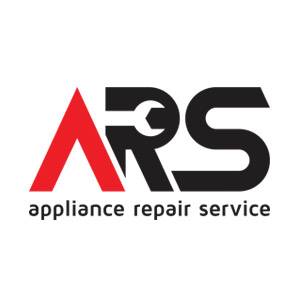
ARS Appliance Repair Service has been trusted across Toronto, Ottawa, and Southern Ontario for over a decade. Our licensed, manufacturer-authorized technicians specialize in repairing all major household and commercial appliances with genuine parts and warranty-backed service. From refrigerators and washers to ovens, dishwashers, and more, we restore appliances quickly, professionally, and correctly the first time, earning the confidence of homeowners and businesses throughout the region.

